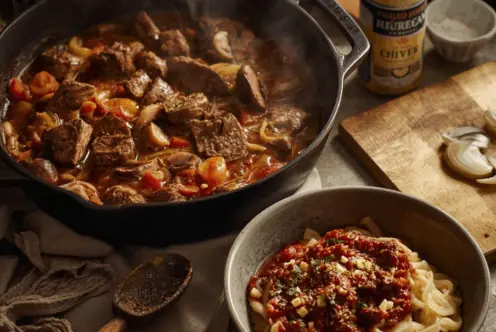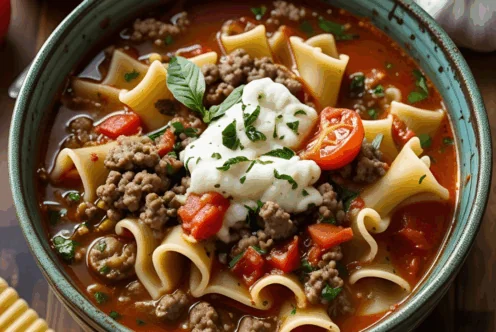Blog
Surprise You’ll Never Guess What Makes You Eat More!
By Sarah Beleski a Recent ASU Nutrition Student
Over-consumption is a problem in America that has been prevalent for decades. However, the topic of overeating usually only revolves around the actual food that is being consumed. The choice of food is definitely an important factor in the research of overconsumption, but there are many other factors that go into the reasons why people tend to overeat. Environmental factors play a big role in influencing consumption intake.
Some people are defensive against the notion of environmental factors influencing consumption because they believe that they are fully in control of their diets. Although it is true that some individuals are capable of eating the correct amounts of food, it would be foolish to ignore the environmental factors that affect the majority of the population.
Reviewing some of the factors that influence the amount of food you consume could be beneficial to you and your family’s health. It can be shocking to realize how often we overlook these influencing factors, so hopefully, this will give you some insight into what some of the factors in your own life might look like.
In Brian Wansick’s journal article (Journal of food quality) about overconsumption, he splits environmental factors into two categories: the eating environment and the food environment. He describes the eating environment as social gatherings, the atmosphere of a location, the effort it takes to obtain food, any distractions that could occur while eating, and basically any ambient factors related to eating food. The food environment, contrary to the eating environment, is described as factors that deal with the way food is presented or provided. This would include factors such as the structure of the food, packaging, portion size, or the manner in which it is served.
What are some of the factors that influence your own consumption volume? It may be hard to pinpoint exactly what drives some of us to overeat but breaking down those environmental factors into situational examples can be a good starting point.
EATING ENVIRONMENT
Location, Location, Location:
Where we choose to eat matters a lot. It not only matters about the actual food we eat but about the atmosphere of the eating environment. Temperature, lighting, odor, and noise all play a role in how much food we consume. Studies suggest that if people are eating in an environment that has high temperatures, they are less likely to overeat than if they are in cold temperatures. The possible reasoning behind this is because more energy is required by the body to regulate its core temperature.
Lighting can influence consumption by increasing or decreasing the length of mealtime and also increasing or decreasing a person’s comfort level. The duration of mealtimes can increase in dimmed lighting because comfort levels rise, and they can decrease in bright or distracting lighting because people are more likely to feel self-conscious or put off by the lighting. Odor and noise seem like more obvious factors that could influence the amount of food consumed. Say you’re at a restaurant and you’re holding a baby who needs a diaper change and is crying their little eyes out. I think it’s safe to assume that you probably wouldn’t be staying for dessert. However, if the noise and odor weren’t an issue, you might be inclined to stay for dessert and even another drink. Everything around us affects how much we eat; we just have to look for those factors.
Effort:
The more effort that is typically involved, the more people tend to not overconsume. It also works in the opposite direction. If obtaining a certain food requires little effort, overconsumption is more likely to occur. A study performed in a cafeteria showed the effects of this factor. The study revealed that people ate more ice cream when the lid was removed than when it was closed. Another study showed that people ate almonds more frequently if they were already shelled than if they were unshelled.
Socializing:
When eating with people that you feel comfortable around, it is more common for a meal to be extended than if you were around strangers. Studies have also shown that student’s food preferences and the amount they consume are affected by how much their peers consume.
Distractions:
Watching a movie or television show can lead to overconsumption because it distracts the person from monitoring how much food they have eaten. More importantly, this situation can easily become a habit and lead people to associate those scenarios with food. Personally, this factor greatly affects my life because I became accustomed to mindlessly eating while watching television. If I go to watch a show, I always feel the urge to grab a snack. You can see how unhealthy this is if I’m constantly snacking during a show.
FOOD ENVIRONMENT
Salience:
In his article, Wansick states that just looking at or smelling food can cause unplanned overconsumption. In one study, sandwiches that were placed in clear wrap were more likely to be overconsumed than the same sandwiches left in a nontransparent wrap. The sandwiches that were in the clear wrap acted as a constant temptation, whereas the sandwiches that were concealed were out of sight, and out of mind.
Sizing:
This environmental factor is probably the sneakiest one of them all. Portion sizes have been increasing steadily for the past 30 years. Just look at the difference in bagel size from the 1990s (left) to now (right). The calories went from around 140 to 350, more than doubling the amount consumed.

Here are some tips to help you alter your eating and food environments:
- Keep tempting foods in a less-convenient location (top shelf of pantry or out of sight)
- Decide how much to eat before you start a meal
- Pre-serve portions if you’re going to be distracted by watching TV while eating
- Wrap tempting foods in something that conceals it, so that it is out of sight
Fill your plate has many wonderful resources for a healthy lifestyle. Check out the recipe section or the produce in season tab for more information
References
Amidor, T. Portions: Then and Now. Foodnetwork. Retrieved from https://www.foodnetwork. com/healthy/packages/healthy-every-week/portions-then-and-now.
Armendariz, M. (2014). Television Food Network. Retrieved from https://www.foodnetwork
.com/healthy/packages/healthy-every-week/portions-then-and-now.
Kuo, S, & Lin, H. (2019). Effects of Food Environments and Eating Environments on Consumers’ Food Consumption Volume. Journal of Food Quality, 2019, 1-7.
Wansink, B. (2004). Environmental Factors That Increase the Food Intake and Consumption Volume of Unknowing Consumers. Annual Review of Nutrition, 24, 455-479.

















